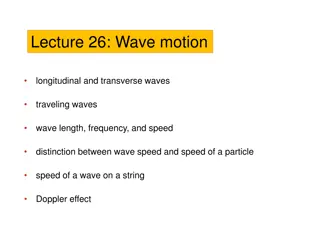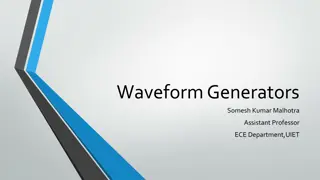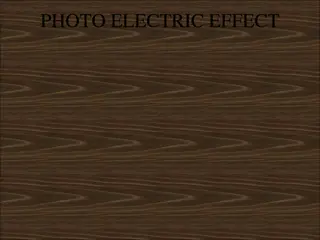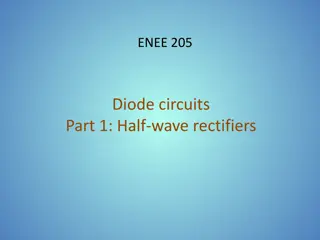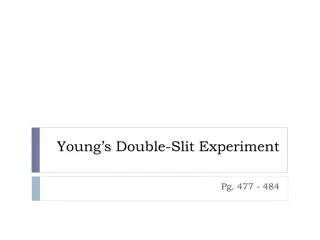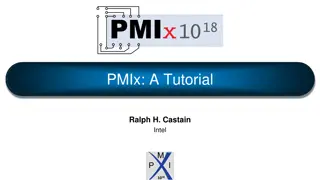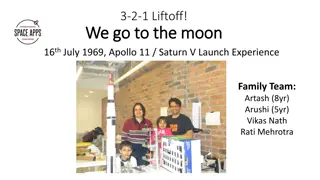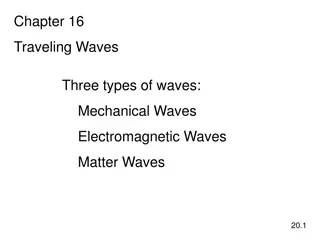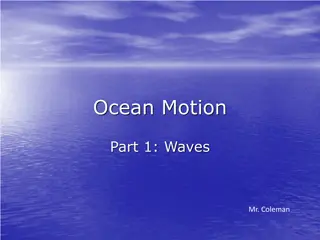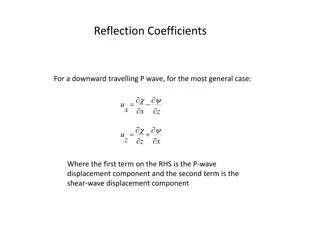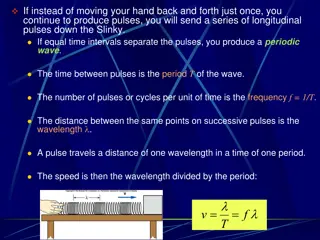Welcome to the Launch of GGS-II Wave 1 in the UK
The Generations and Gender Survey (GGS) in the UK provides insights into family formation years, including partnership, fertility, childcare, and employment dynamics. Explore methodological and substantive presentations, relationship patterns, and additional topics covered by the GGS. The survey, funded for the first time in the UK, captures the underrepresented millennial cohort and addresses post-Covid concerns. Discover the timeline and key aspects of the UK GGS.
Uploaded on Mar 09, 2025 | 0 Views
Download Presentation

Please find below an Image/Link to download the presentation.
The content on the website is provided AS IS for your information and personal use only. It may not be sold, licensed, or shared on other websites without obtaining consent from the author.If you encounter any issues during the download, it is possible that the publisher has removed the file from their server.
You are allowed to download the files provided on this website for personal or commercial use, subject to the condition that they are used lawfully. All files are the property of their respective owners.
The content on the website is provided AS IS for your information and personal use only. It may not be sold, licensed, or shared on other websites without obtaining consent from the author.
E N D
Presentation Transcript
Welcome to the Launch of GGS-II Wave 1 in the UK! Brienna Perelli-Harris Olga Maslovskaya Ann Berrington Grace Chang Bernice Kuang 19 January 2024 @CPCpopulation 1
Todays Event -Generations and Gender Programme Overview Anne Gauthier, Director -UK GGS Lunch -Methodological Presentations -Substantive Presentations
The Generations and Gender Survey in the UK First time UK GGS is funded Directly comparable to international GGS All adults aged 18-59 Focus on family formation years Captures underrepresented cohort (millennials) Worked closely with NatCen, UK survey research agency Work packages in ESRC grant 1) Methodological development: data quality, representativeness, incentive experiment, QR-code experiment Olga Maslovskaya, CoI; Grace Chang, Post-doc 2) Analysis of partnership and fertility histories, childcare Ann Berrington, CoI; Bernice Kuang, Post-doc
Latent class growth models describing relationship patterns Latent class growth models describing relationship patterns Perelli-Harris, B., & Lyons-Amos, M. (2016). Partnership patterns in the United States and across Europe: The role of education and country context. Social Forces, 95(1), 251-282. 5
Additional topics covered by the GGS Employment, including irregular work schedules, parental leave, remote working Partner s education and employment Attitudes to work-family balance, parenting, gender division of labour Parents and intergenerational relations
The GGS in the UK Took place post-Covid, during the Cost of Living Crisis Additional questions on: Ethnicity Brexit Reasons for leaving parental home Concerns about the future (terrorism, climate change, economic uncertainty, refugees) Risk-taking and trust
The UK GGS Timeline Jan 2022 June Jul Aug Aug Nov Jan 2023 Phase 1 Questionnaire and software development Phase 2 Data collection Stage 1 Collected first half of the data (N~3500) Decision about incentives for Stage II Stage 2 Collected second half of the data (N~3500) Cognitive user testing interviews Weighting & final data cleaning Incentive Experiment QR code v.s. link 8
Phase 1 Infrastructure enhancement grant to: 1) Improve look and feel, especially on mobile devices 2) Improve collection of dates and partnership histories 3) Introduce new, UK questions 4) Used Cognitive Interviewing to test design enhancements
Cognitive User Testing Relationship history Children Children with multiple partners Children with multiple partners Min 3 Living with parents Digital confidence 12 interviews Cohabited with 2+ partners in lifetime Min 3 Still living in parental home Min 3 Participants were trained to think aloud to talk through their thought process with the interviewer, followed by probing questions after completion of the survey 3+ Less children confident Quota set Min 3 Min 3 Total screened by Propeller 7 4 4 3 6 Total when screened by interviewers 8 4 4 3 4 Gender Age Device type Smart phone/ tablet Min 8 Laptop / PC Men Women 18-30 31-45 46-59 Quota set Min 6 Min 6 Min 3 Min 3 Min 3 Min 4 Total when screened by Propeller 6 6 3 3 6 8 4 Total when screened by interviewers 6 6 3 3 6 4 8 10
Cognitive User Testing: Date entry formats GGP format: [MM/YYYY] We suspected that date entry was cumbersome and not optimized for smartphones. We also wanted to allow respondents to enter don t know for either year or month (not both). Tested the following formats: [MM/YYYY]. Two types of questions; one without a soft prompt and one with a soft prompt (as seen in previous slide) First to enter year [YYYY], followed by month [MM] Best format is a written year [YYYY], followed by choosing pre-defined months 11
Cognitive User Testing: Summary tables of partnership and fertility histories Known drop-off during life events section of GGS Sought alternative ways of collecting retrospective data Event history calendars found to prompt memory of events, although only tested in face-to-face surveys Conducted a workshop on online collection of different life histories Concern about feasibility on smartphones Developed summary table to be included after fertility and partnership section to aid recall 12
Cognitive User Testing: Summary tables of partnership and fertility dates 13
Cognitive User Testing: Summary tables of partnership and fertility dates Cognitive Testing participants did not think that tables improved recall dates or willingness to amend dates Instead, tables raised privacy concerns, esp. after seeing the summary table Participants said they did not like seeing all of their past laid out before them is Big Brother watching you? (Female, age group 46-59 years, 2 partners, 2 children) Participants also did not like providing information for ex-partners One participant would have deleted all their information if they were not with an interviewer; other participants broke off after seeing table. 14
Phase 2: Data collection Online data collection no interviewer present to guide respondents through the questionnaire No individual-level sampling frame in the UK Postcode Address File PAF (address-based sampling frame) has deadwood and does not have names, telephone numbers or email addresses of people cannot specify 18-59 year olds Within household selection of individuals can introduce self- selection bias in survey estimates One individual per household and last birthday method 15
Data collection 84,650 issued sample size (~ half in each stage) Mailing 2 Mailing 3 Mailing 1 First set of invitation letters sent on a Wednesday (white envelope) 2nd reminder sent 12 days after Mailing 2 on a Wednesday (white envelope) Reminder sent 10 days after Mailing 1 (on a Friday) (manilla envelope) Deadwood/ineligibility rate: 38.4% N=7,204 (>target 7k) Response rate=15.1% 16
Data Deposit NIDI hub https://www.ggp-i.org/ggs-round-ii/ UK Data Service https://ukdataservice.ac.uk/ 17
Future of the Generations and Gender Survey GGS is longitudinal with 3 waves, 3 years apart UK GGS-II wave 2 to be conducted in 2025-2026 5,898 have agreed to be recontacted for future waves Now conducting brief survey to update address, email, and phone numbers Record whether there was a change in partnership or childbearing since previous survey 19
To explore the data & further questions CPC website https://www.cpc.ac.uk/research_programme/generations_and _gender_survey/#Current CPC contact cpc@soton.ac.uk 20




